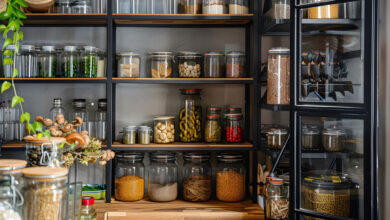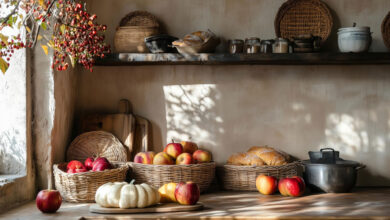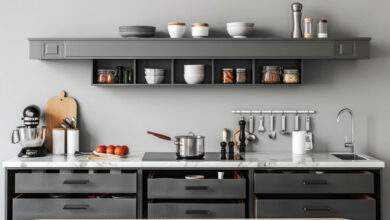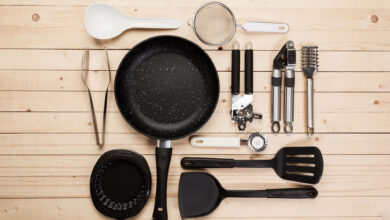Cooking at home can be a joyful and fulfilling experience, but it’s essential to prioritize safety in the kitchen. Accidents can happen, but with the right precautions, you can minimize risks and create a safe cooking environment. Here are some vital kitchen safety tips for home chefs to ensure a safe and enjoyable culinary adventure.
1. Keep Your Work Area Clean and Organized
A cluttered kitchen can lead to accidents. Keep your countertops clear of unnecessary items and ensure that all utensils and ingredients are within reach. Regularly clean spills to prevent slips and falls, and maintain a tidy workspace to promote focus and efficiency while cooking.
2. Use Sharp Knives Safely
While it may seem counterintuitive, sharp knives are actually safer than dull ones because they require less force to cut. Here are some tips for safe knife handling:
- Cut Away from Your Body: Always cut in a direction away from yourself to minimize the risk of injury.
- Use a Stable Cutting Board: Ensure your cutting board is secure. Consider placing a damp cloth underneath it to prevent slipping.
- Store Knives Properly: Use a knife block, magnetic strip, or sheaths to keep blades protected and away from hands when not in use.
3. Practice Safe Cooking Techniques
Cooking involves heat and various tools, so it’s essential to follow safety practices:
- Stay Attentive: Never leave cooking food unattended, especially when using high heat. Set a timer to remind you to check on it.
- Use Oven Mitts: Protect your hands with heat-resistant oven mitts when handling hot pots, pans, or baking sheets.
- Avoid Steam Burns: When opening lids on hot pots, lift them away from your face to allow steam to escape safely.
4. Be Mindful of Food Safety
Foodborne illnesses can be avoided with proper food handling techniques. Here’s how to keep your food safe:
- Wash Your Hands: Always wash your hands with soap and water before and after handling food, especially raw meat, poultry, or seafood.
- Separate Raw and Cooked Foods: Use different cutting boards and utensils for raw and cooked foods to prevent cross-contamination.
- Cook Foods to the Right Temperature: Use a food thermometer to ensure meats and other dishes reach safe cooking temperatures.
5. Use Appliances Safely
From blenders to stovetops, kitchen appliances can be hazardous if not used properly:
- Follow Instructions: Read the user manual for appliances and follow the manufacturer’s guidelines for safe operation.
- Unplug When Not in Use: For small appliances, unplug them when not in use to avoid accidental activation.
- Keep Cords Tidy: Keep appliance cords away from heat sources and avoid dangling cords over countertops to prevent accidents.
6. Be Cautious with Hot Surfaces
Hot surfaces can lead to burns and injuries, so exercise caution:
- Label Hot Surfaces: If you have children around, use clear labels or warning signs to indicate hot surfaces on the stove or oven.
- Avoid Overreaching: Use a step stool instead of leaning over hot surfaces to reach items that are out of reach.
7. Know Your Fire Safety Measures
Kitchen fires can happen, but knowing how to respond can make a significant difference:
- Keep a Fire Extinguisher: Have a fire extinguisher nearby, specifically rated for kitchen fires (Class K).
- Know How to Use It: Familiarize yourself with how to operate the extinguisher. Remember the acronym PASS: Pull, Aim, Squeeze, and Sweep.
- Don’t Use Water on Grease Fires: Instead, cover the fire with a lid or use baking soda to extinguish small grease fires. If the fire is large, evacuate and call emergency services.
8. Wear Appropriate Clothing
Your choice of clothing can impact safety in the kitchen:
- Avoid Loose Clothing: Loose sleeves can catch fire or get caught in appliances. Opt for fitted clothing while cooking.
- Use Non-Slip Shoes: Wear sturdy, non-slip shoes to prevent falls in case of spills.
Conclusion
Kitchen safety is paramount for every home chef. By following these essential safety tips, you can create a secure cooking environment that allows you to focus on what you love: preparing delicious meals. Remember, a little precaution goes a long way in ensuring a safe and enjoyable culinary journey. So, roll up your sleeves, put on your apron, and cook with confidence! Happy cooking!




